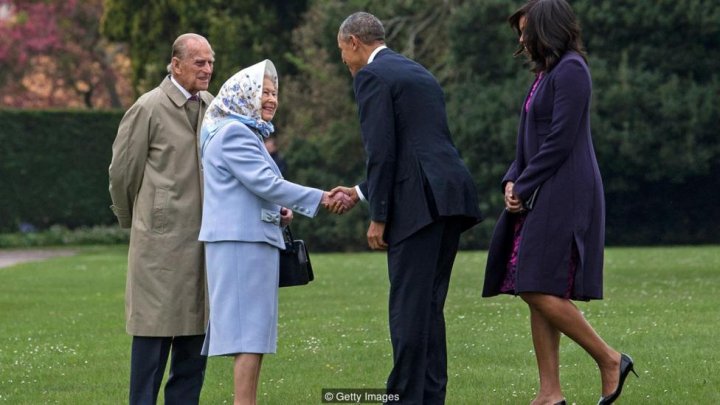British monarch makes appearance at London Fashion Week. What did Queen wore?
 foto: bbc.com
foto: bbc.com
Her Majesty the Queen has never yielded to fashion’s whims. As royal designer Sir Norman Hartnell said rather sternly to The New York Times in 1953: “The Queen and the Queen Mother do not want to be fashion setters. That is left to other people with less important work to do.” The implication being that she is above all that sort of thing.
Maybe not, if the Queen's recent appearance on the front row at London Fashion Week is anything to go by. She was there to present the inaugral Queen Elizabeth II Award for British Design to designer Richard Quinn, and as she presented it, announced the award as her "legacy" to British fashion.
And in her own inimitable way, the Queen's has been a strong and consistent force in fashion over the decades. Her signature style originated at the start of her reign, and she has steadfastly refused to deviate – so no regrettable ‘70s prints or ill-considered ‘80s frills and flounces. The Queen’s style is constant and intrinsic to her identity – and although it may look effortless, it subtly sends out all the required messages. It says: unwavering authority, tact and diplomacy, and when the occasion demands it, knock-out, opulent elegance.
n her book Luella’s Guide To English Style, Luella Bartley lists some tongue-in-cheek Upper Class Rules of dressing: “Nothing should look new; Impractical fashion victims will catch their death of cold; If you have to try you have lost; Tradition is all that matters; The country is where it’s at.” The Queen’s uniform represents these codes. It’s her look and she’s sticking with it – and it speaks volumes.
The Queen’s style says unwavering authority, tact and diplomacy
The Queen’s sartorial choices frequently set the tone. For the Obamas’ visit to Windsor Castle for her 90th birthday, for instance, the Queen and the Duke of Edinburgh were filmed arriving to meet their guests in the grounds of the estate – with the Duke himself at the wheel of the Range Rover. The Queen sported a light blue skirt suit – with her trademark, no-nonsense headscarf, knotted pragmatically under the chin. The understated mood was set – informal, friendly, familiar.
The headscarf says unflashy, weather-proof, countryside, practical - and it has been a royal signature look since the 1940s when a young Princess Elizabeth was photographed with her sister Princess Margaret at a royal horse show, both sporting floral scarves. The look has also been adopted by the likes of Jackie Kennedy and Audrey Hepburn, and even taken on as a catwalk look in recent years by designers such as Dolce & Gabbana. Indeed, Richard Quinn, the winner of the Queen's new award, even featured the headscarf in his show. In it the Queen is not just the Queen but the traditional, no-nonsense English countrywoman and grandmother, with dogs at her feet and a copy of the Racing Post tucked under her arm. That there is a touch of the ‘Brenda’ (Private Eye’s working-class nickname for the monarch) about the look only adds to its charm.
‘Always appropriate’
At Balmoral, the Queen goes even more off-duty in her look. From the 1950s it has remained unchanged – a tweed jacket or knitted twin-set, and a pleated Balmoral-tartan skirt. The tartan, with its granite grey, black and red hues, is personal to the royals and was created by Queen Victoria and Prince Albert after they acquired the Scottish estate. This unchanging attire of the Queen’s sends a subliminal message, not just about her character but about her class – after all, in certain circles, change, newness, trends and ostentation are somehow rather gauche, indicators of a kind of arriviste mentality.
Read more on bbc.com.